You might be surprised to find out that there’s not an astronomical amount of differences between blenders and food processors.
There’s enough to make them into different appliances, but we’re going to discuss all the tasks that blenders and food processors can do in tandem as well.
There’s nothing wrong with getting both of them, especially if you’re akin to fun, long hours spent in the kitchen whipping up masterpiece after masterpiece of culinary cuisine.
Let’s figure out what you need by discussing the benefits of each.
Benefits of a Blender
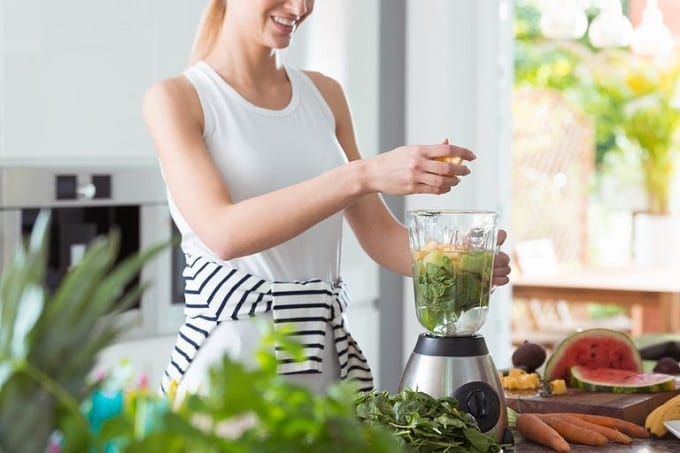
First and foremost, blenders are made with smaller capacity in mind.
You can get an eight-cup (64 ox) capacity which will do you well for a myriad of tasks, but they’re designed for individual or small party use more than large-scale cooking or beverage preparation.
Does that make them less viable?
Not at all. There’s actually a drawback with food processors, and that’s the basin diameter. Your main chamber has a wider circumference than the bottom of a blender bottle, which is usually about 11” in total.
Try making a smoothie in a food processor, and you’re going to run into a disaster. It’s going to coat the interior more than it’s going to output, so you’ll be left with a lesser volume beverage.
If you’ve ever seen that little vortex that spawns in the center of your blender pitcher, that’s the force of the spinning blades creating an undertow of sorts to evenly imbue all the food products together.
A food processor has a short spire in the middle and doesn’t do the same thing.
Benefits of a Food Processor
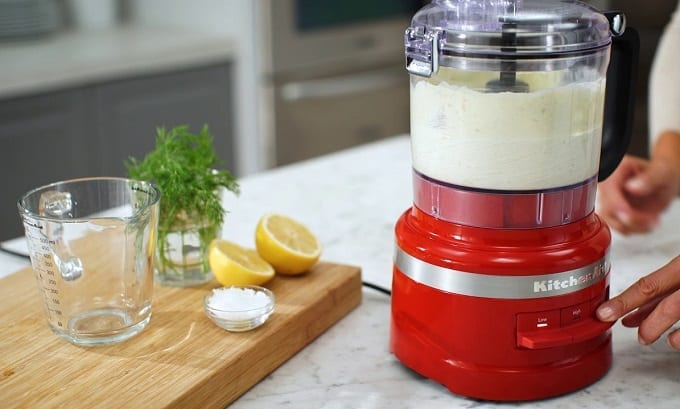
There’s more room for actual food.
Blenders are designed for liquids, but the high-end ones kept the same design as the standard models that we all know and love but made them high powered.
That doesn’t mean the base is wide enough to properly immerse all the food. While that depends on the specific blender in question, it’s still safe to assume that you’ll be able to cover more ground with a food processor.
If you overstuffed a blender pitcher, you would have to grind it all out and then mix it up to make sure it blended consistently, or blend in batches.
Food processors also have a speed difference. Again, this is in bulk, but they are faster than blenders when you’re doing a big batch of food.
We wouldn’t recommend using a blender if you’re grinding meat or making mixes for large families or get-togethers.
Four of you for a morning breakfast or midday lunch? Sure, a blender will work fine, but it’s when you’re making food in bulk that it becomes an issue.
Notice that we mentioned food, not drinks. If you were trying to make soup in a food processor, it would be a fresh nightmare that you’d be scrubbing off the ceiling for weeks.
It just coats the interior of the protector and bowl and doesn’t really mix it up well. There’s too much power, and no vortex like a blender would create.
Instead of immersively blending the soup, it would splatter it out of control.
Crossover Benefit Summary
As you can see, this is a recap of the best uses of both machines.
Their strengths, their weaknesses, and the difference between quality over quantity.
| Food Type | Blender | Food Processor |
| Patte and Paste | 7/10 – Good | 10/10 – Excellent |
| Chopped Veggies | 4/10 – Poor | 9/10 – Good |
| Dough (Pizza, Pastry) | 8/10 – Good | 9/10 – Good |
| Smoothies | 10/10 – Excellent | 3/10 – Poor |
| Soup | 9/10 – Good | 3/10 – Poor |
Blenders are versatile, but are meant for liquids more than anything else—smoothies, purees, soup is even great, but you shouldn’t push it too far unless you opt for a top tier model.
Food processors are best at dicing and chopping solids but don’t expect to get a creamy, smooth consistency out of them.
Getting a high-quality blender is your best option to get the best of both worlds.
Food processors are built with capacity and volume that aren’t ideal for individual beverages; you’re going to be using them to make batches of food in higher volume.
Blenders are the more versatile option (and in some cases, even Vitamix blenders are cheaper than a high-quality food processor).
Related Questions
Can You Use a Blender in Place of a Food Processor?
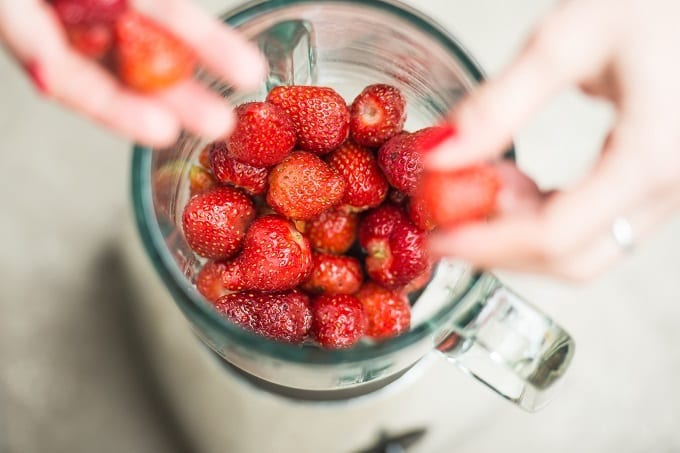
Most certainly. Food processors are built for, well, food more than anything else.
The power of your blender, the capacity, and the durability of the blades will determine its viability to be used in place of a food processor.
You can grind meat and poultry in a blender, and do most of the same tasks that a food processor would be able to handle. It’s a volume that gets to be a problem.
Blenders are good for single-use or small batch use, whereas a food processor would be better for large batch cooking.
Since food processors are a bit faster at cutting up hearty foods, it can save you a lot of time if you’re expected to entertain a lot of people.
When is a Food Processor Better?
For large volume batches of food, and chopping vegetables; not much else.
While a food processor can chop veggies without absolutely obliterating them, it’s with a delicate hand.
You have to feather the buttons on a food processor to chop, and it can take as long as doing it by hand with a knife if you’re looking for a certain consistency.
Food processors cannot handle liquids as well as a blender though, so you’d be hard-pressed to make a thin sauce or a smoothie in a processor.
Blenders take up less space, generally use less power, and have a quicker cleanup—for some of us, it’s a no-brainer.
Can I Make Juice With a Food Processor?
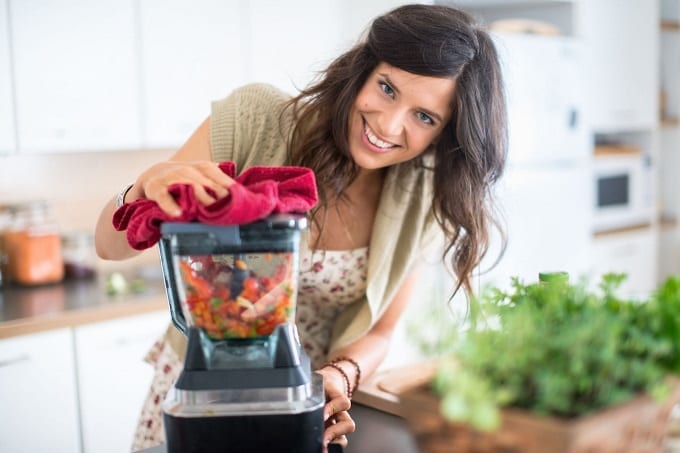
No, you cannot.
Since a food processor is basically a big spinning saw blade for food, it can chop and dice food down into a pulp, but it’s not going to make a drinkable juice.
Food processors and blenders share one thing in common that juicers do not: they leave the fiber of fruits and vegetables, rather than separating it.
Not only is fiber excellent for you, but it’s also what separates a smoothie or a thick drink from the juice.
Blenders can make a well-mixed beverage with the pulp from fruits and veggies, but using a processor will simply pulverize the food.
That’s good for cooking, not so great for pouring and immediate drinking.
Can My Blender Chop Vegetables?
It’s not recommended.
Blenders rely on the vortex that preconfigured settings use to evenly pulverize whatever goes into it, so even if you feathered the pulse button, you’d end up with inconsistent results because you’re not creating that vortex.
You should either do it by hand (recommended) or get a food processor to handle that task. Manual choppers will also expedite the process.
How do You Add Liquid Into a Food Processor?
Slowly. Very slowly.
Some dishes are going to call for it, but if you pour it all in at once, it’s going to end up like a mess.
Even if you have a rubber stopper for the top of the guard, you’re going to waste a lot of food by painting the inside of the lid with it.
When you add it in, you’ll eventually hit a point where it’s too much and it will turn food into a slushy, so be careful.
What’s the Best Blender to Replace a Food Processor?
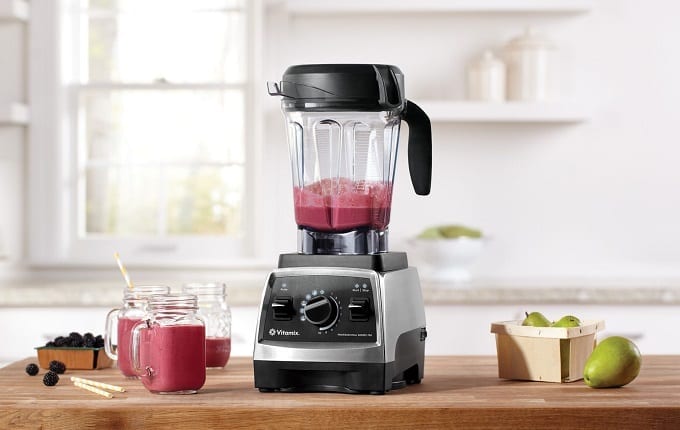
The Vitamix 750 professional-grade model is probably the best thing you could ever ask for in terms of replacing the need for a food processor in your kitchen.
Between the hot soup functions, pulse modes and numerous preprogrammed bits, you can do almost anything with it.
The 750 comes with a 64 oz pitcher, which is considered big for blenders.
While that might not be as much as a food processor container, you can upgrade your pitcher and find larger ones, because the 750 is the most versatile Vitamix blender yet.
Add attachments and augment your blender to become the ultimate kitchen companion.
There are ice blades for making shaved ice, single-serve pitchers for on-the-go healthy food choices, and containers that double as food storage bins in the refrigerator until you’re ready to enjoy it again.
Which Will You Choose?
What’s your choice, then?
It all depends on your dietary choices and the type of food that you eat because if you’re a hearty food type of person, a food processor might be more for you.
Enjoy soups and smoothies like nobody else?
Blenders. Take a second look at the information we’ve supplied, and make your decision.
Remember: a high-quality blender can replace almost all the uses of a food processor, but not the other way around.
Subscribe To Stumpf Studio Newsletter
By entering your email address you agree to get email updates from Stumpf Studio. We'll respect your privacy and unsubscribe at any time.
